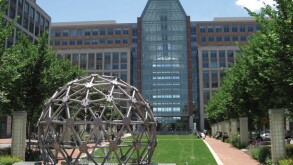Association for Molecular Pathology v Myriad Genetics hinges on whether the building blocks of life that form the human genome are also intellectual property.
A coalition of plaintiffs that includes researchers, patients, and breast cancer and women's health groups argue that genetic material is a "product of nature" that is ineligible for patents.
Utah-based Myriad, whose supporters include the Biotechnology Industry Organization (BIO) and the Coalition for 21st Century Medicine, maintains that genetic material removed from the body through "invented" methods can be patented because it is no longer naturally occurring.
The lawsuit was brought by the ACLU and the Public Patent Foundation, a non-profit legal group affiliated with the Benjamin N Cardozo School of Law.
A District Court ruled in 2010 that Myriad’s patents related to the isolation of breast and ovarian cancer genes BRCA 1 and BRCA 2 were invalid. But the Federal Circuit reversed the decision in 2011 in a 2-1 decision.
During Monday's arguments, Gregory A Castanias, the attorney representing Myriad Genetics and head of Jones Day’s Federal Circuit practice, quickly found himself on the defensive. Justice Sonia Sotomayor immediately interrupted his opening remarks to express that it's "very, very difficult to see how you can patent a sequential numbering system (created) by nature."
Sotomayor has always been under the impression that to obtain a patent one must "add to what nature does”, she noted. "There was invention," Castanias responded, "in the decision of where to begin the gene and where to end the gene."
Justice Stephen Breyer lectured that if someone discovers a "satisfying new process to extract sap" from a tree or plant in the Amazon or discovers how to treat cancer with the sap, they can patent those things.
"What you can't patent is the sap itself," he said, underscoring the importance of keeping products of nature free from patents. "That's the framework that I'm bringing to the case," he added.
Drawing a comparison with a baseball bat that was "invented”, Chief Justice John Roberts suggested that Myriad didn't have to invent any DNA strands – it just snipped them. "You wouldn't even know where to snip without the Myriad invention," Castanias countered. Elena Kagan, the newest justice, asked whether another major scientific breakthrough, the first isolation of a chromosome, could have been patented. Castanias said “yes” with a caveat – if the chromosome “had a specific utility”.
Earlier in the proceedings, Justice Ruth Bader Ginsburg asked Christopher A Hansen, the attorney for the Association for Molecular Pathology, to explain the difference between a patent on aspirin or whooping cough medication and Myriad's patents.
"This court has used the example of gold," said Hansen, senior national staff counsel for the ACLU. "You can't patent gold because it's a product of nature." He later warned: "When you lock up a product of nature, it prevents industry from innovating and making new discoveries."
During an exchange with Hansen, Justice Antonin Scalia suggested that companies such as Myriad might lack the incentive to make significant financial investments in genetic research if they can't patent DNA. When Hansen surmised that companies would still invest to compete for Nobel prizes and recognition, Justice Kagan said she was hoping for a different answer: that companies would still conclude that such investments were worthwhile business decisions.
The Court is expected to issue its judgment in the case in the next few months. More information on the dispute is available on Managing IP's dedicated topic page.










